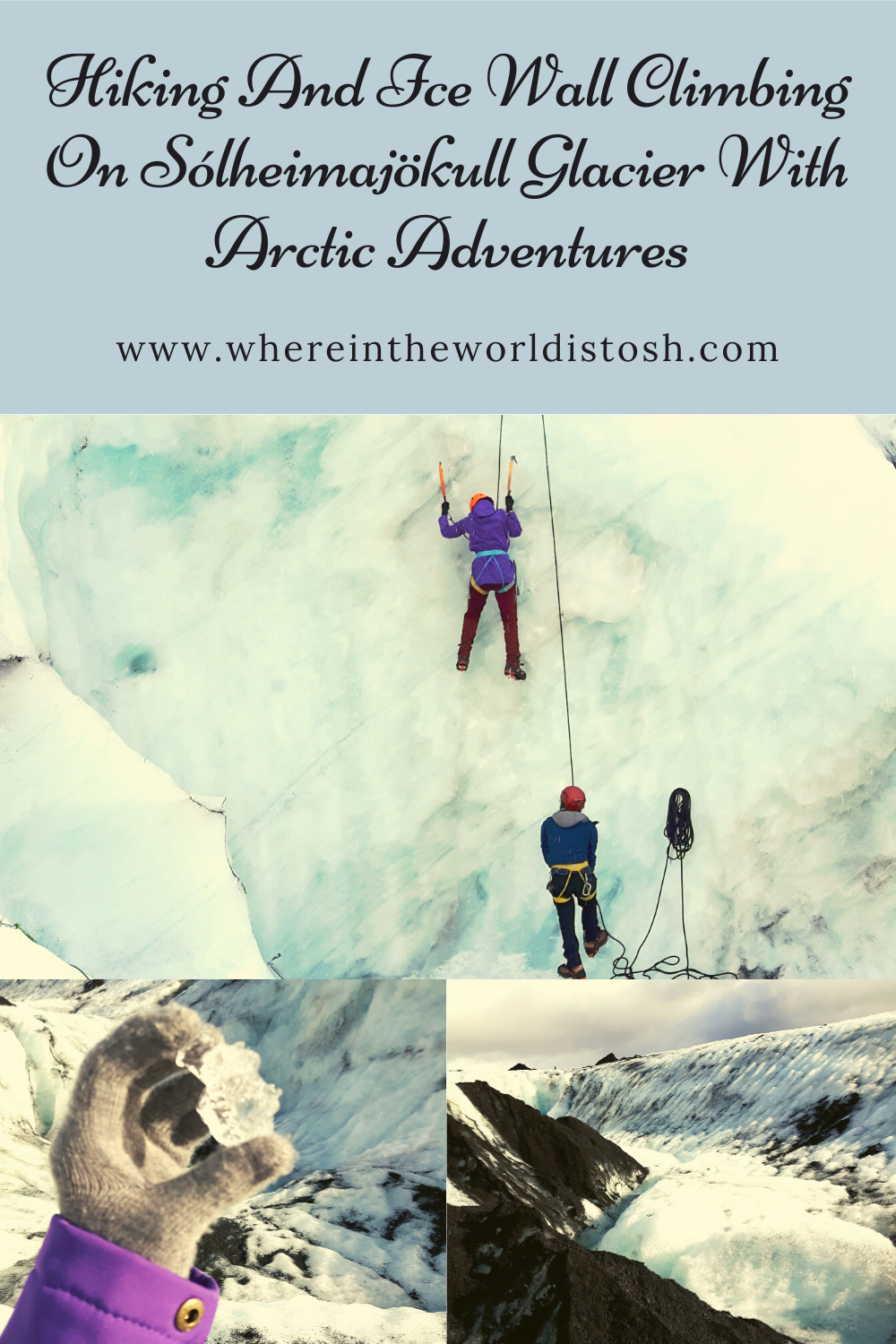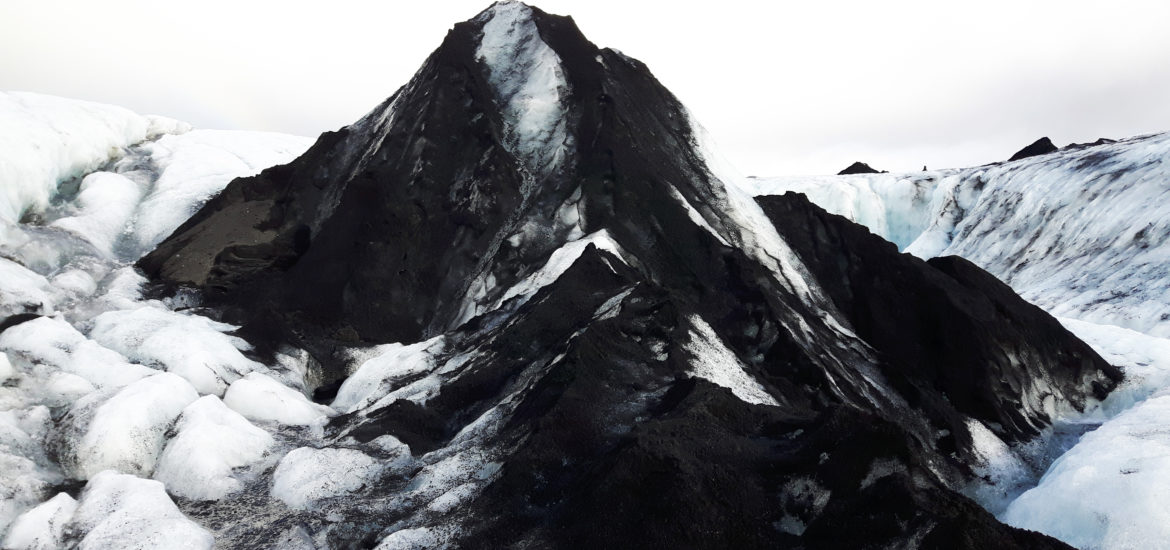This post contains affiliate links to products and or services. I may receive a small commission for purchases made through these links, but with no additional costs to you.
Iceland’s majestic glaciers are often thought of as cold, icy, snow covered barren areas of land that are unreachable to most people. Glaciers are more than just chunks of ice and snow though. The complex colour palette and geology of Icelandic glaciers range from dark black areas covered in ash from previously erupted volcanoes, thick blue ice that is older than 500 years, bright white ice, deep dark crevasses plunging to unknown depths and streams of pure glacial runoff water making their way down the glacier with the ever changing weather. Sadly, scientists believe that with the constant warming of the Earth, climate change, which is constantly happening all the time, is being seen in Iceland now more than ever before and predict that within the next 100 years, Iceland’s glaciers will be in a critical state of no return.
Read more: Inspired by Iceland – The Land of Fire & Ice
Despite being seen as large, dangerous and overwhelming to most people, I was about to go hiking and ice wall climbing on the Sólheimajökull Glacier, otherwise known as the “Incredibly Shrinking Glacier of Iceland” in Southern Iceland. Sóheimajökull is an outlet glacier of Mýrdalsjökull, Iceland’s fourth biggest glacier, but regardless of size, it still gets the unwanted name of “incredibly shrinking” because it is doing just that; shrinking at an alarming rate. In the last decade alone, Sólheimajökull Glacier has shrunk a staggering kilometre in length. I decided to book my hiking tour with the knowledgeable guides at Arctic Adventures to really learn and understand the severity of climate change and to enjoy the glacier’s raw beauty while it is still there.
It was a cool and breezy morning when the Arctic Adventures van came and grabbed us at our hotel in downtown Reyjkavík. Our guide jumps out of the van to greet us with a warm and gentle voice. “How are you doing today? Are you ready to go glacier hiking?” Our guide’s name is Hodei and hails from Spain – a complete contrast to Iceland’s cold and icy weather. He is well trained and extremely knowledgeable about glaciers and glacier hikes. Sólheimajökull is actually the second glacier he has worked at. I guess you can say he had a change of offices.
Read more: Snowmobiling on Langjökull Glacier in Iceland
Once we were in the van, we picked up a few more people and began our two hour drive to Sólheimajökull. About an hour and a half into the drive, we had enough time before our hike to visit one of the most popular waterfalls in the entire country; Skógafoss. As we were coasting along Highway 1 (Ring Road), Skógafoss came into full view. The sun decided to fully come out at this point in the morning as well, making the surrounding hills pop with a bright emerald green colour. I gleefully jumped out of the van in pure awe at the site of the waterfall. It was massive. As I walked along the river leading up to mighty Skógafoss, I couldn’t help but feel small in its commanding presence. The loud roar of the water cascading over the cliff above and crashing down to the river below was a sound I’ll never forget, as it was almost deafening the closer I got to it. I looked up at the large clouds of mist floating in the air above me, which made me feel like I was like a scene from a Planet Earth nature movie. What made the scene even more fairy tale like – a rainbow appeared within the sunshine and mist. All I was missing was a unicorn to complete the magical circle!
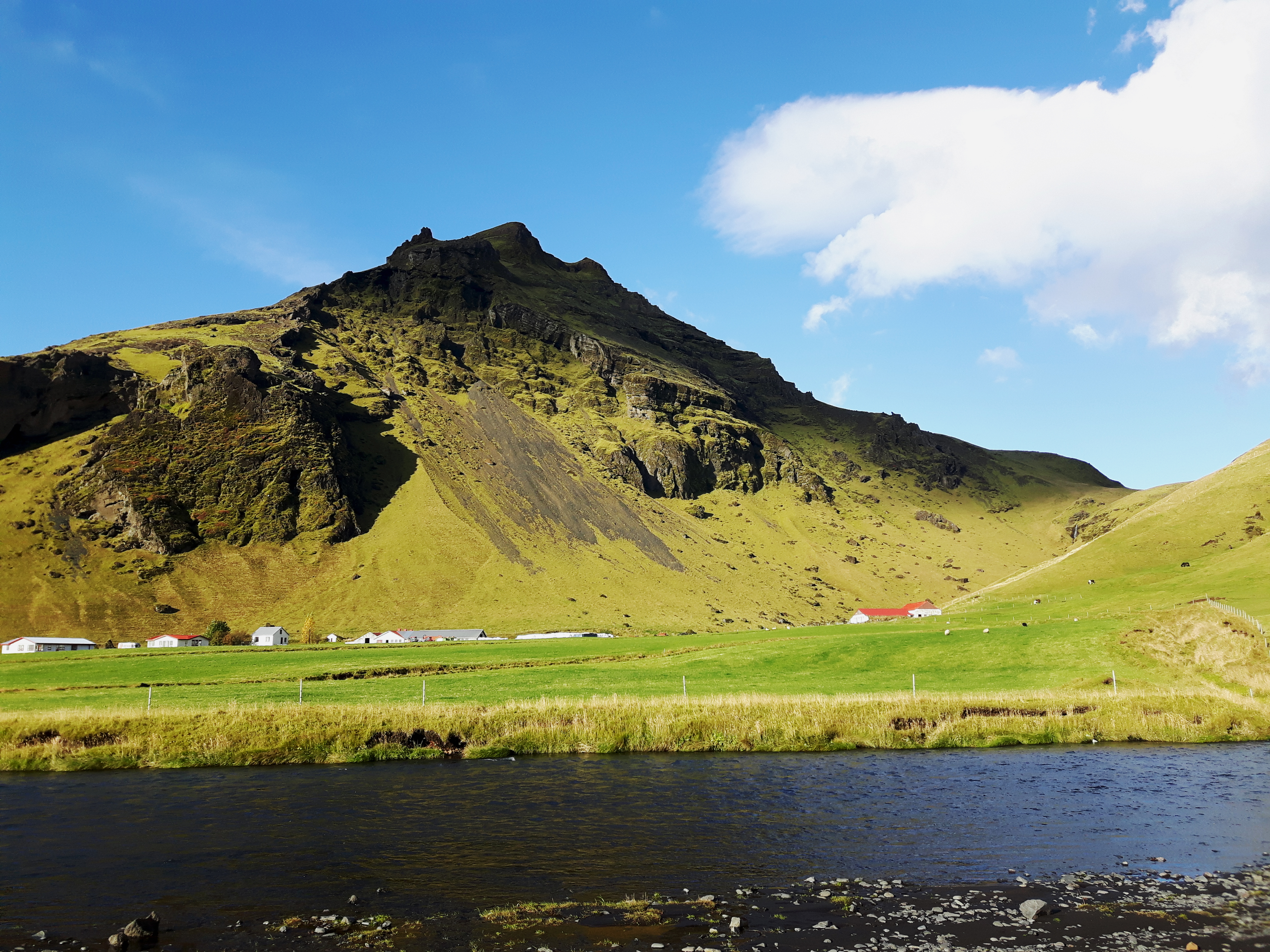
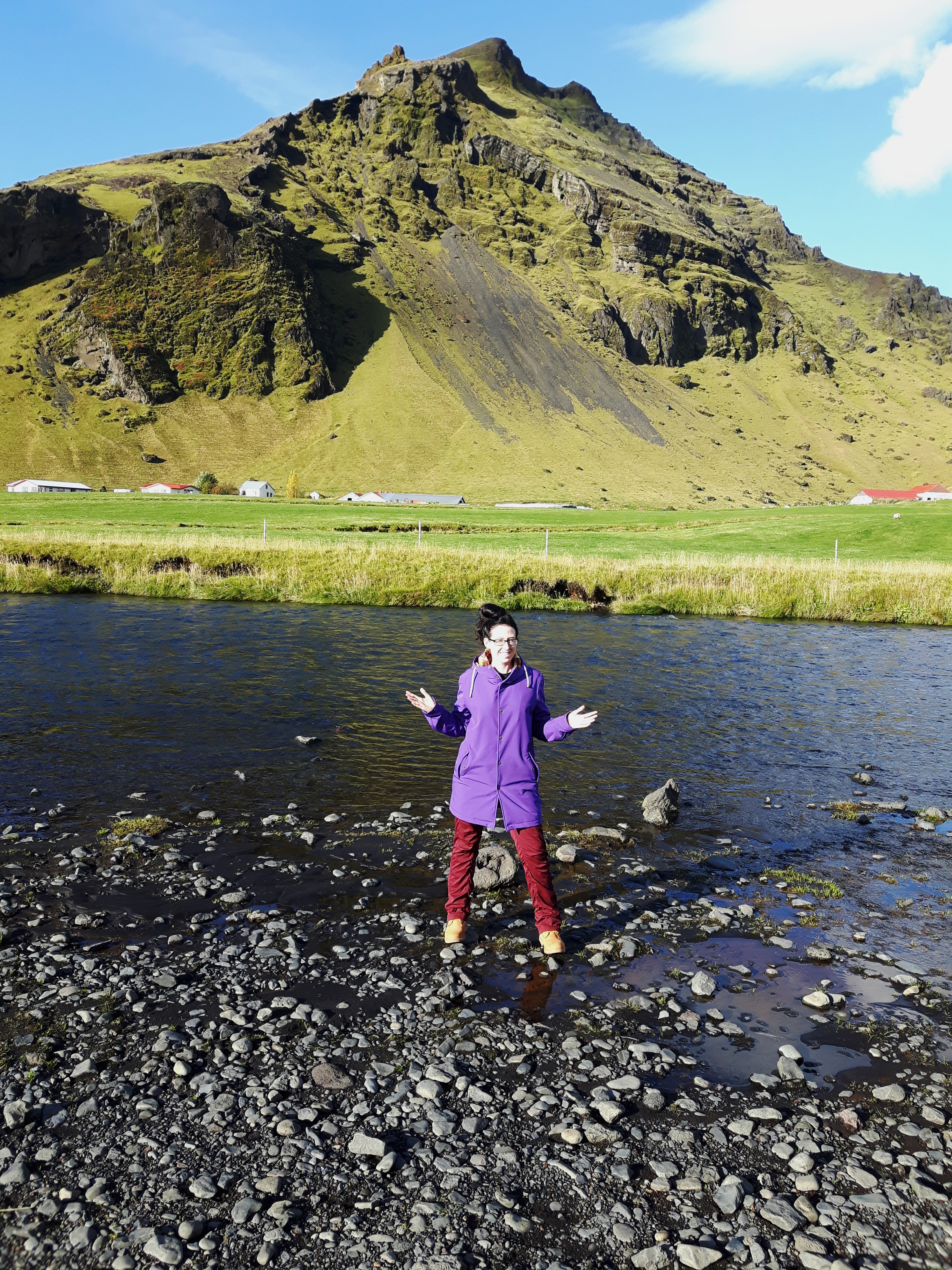

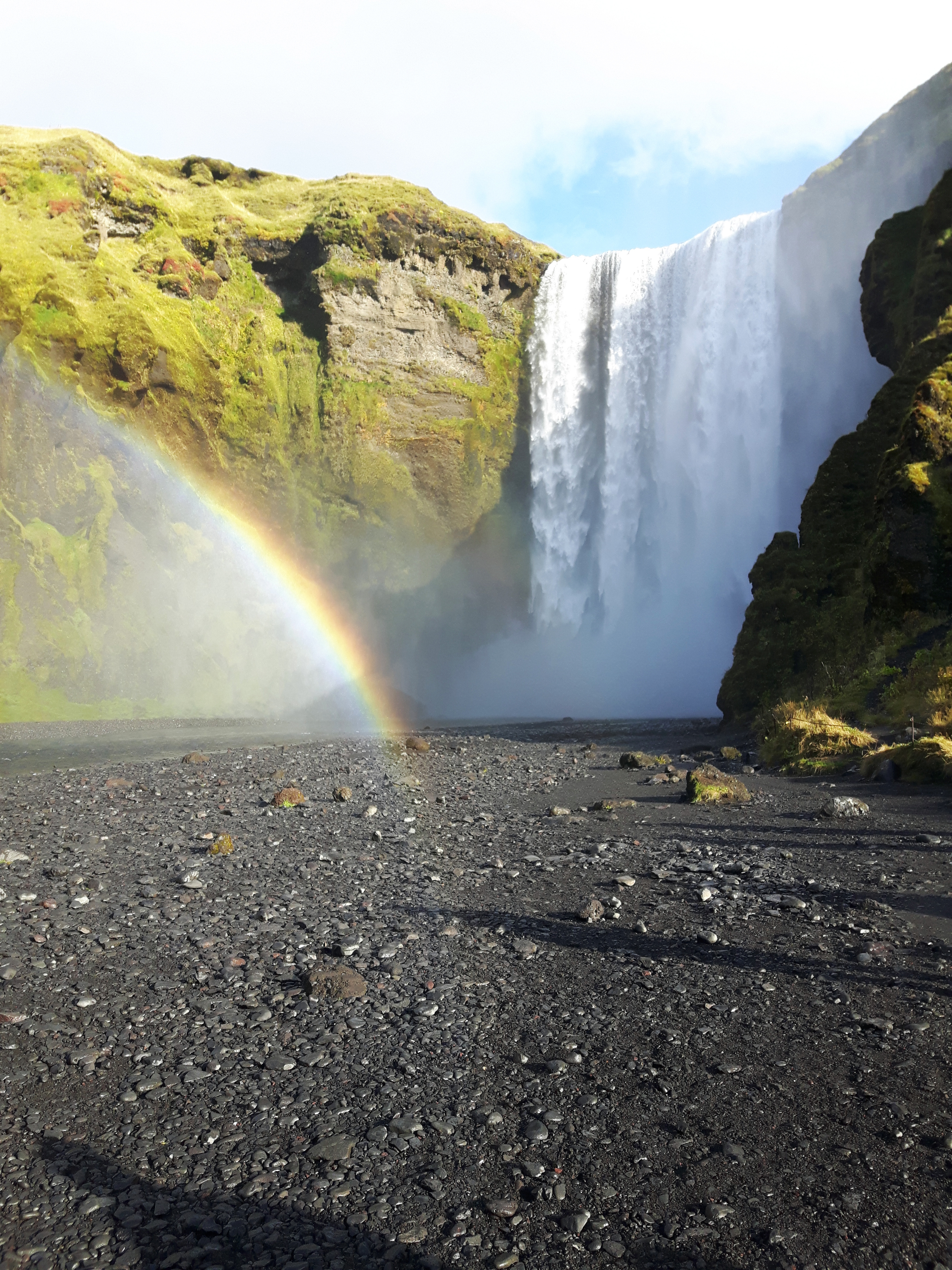
After a quick visit to Skógafoss, we were now on our way to Sólheimajökull, which was only a short 15 minute drive away. Once we got to the road labelled “Sólheimajökull”, we then followed a winding gravel and pothole covered road to the parking lot near the foot of the glacier. Upon arriving and hopping out of the van, I was nearly knocked to the ground by gale force winds. I fought the gusts of wind and made my way over to the gutted yellow school bus, which was a make shift change room/gear closet for hikers to grab the necessary gear such as proper hiking shoes, crampons, harness, ice pick and of course, a helmet. Once we were suited up in our harness and helmet, we were broken up into smaller groups of seven and started the twenty minute hike along the lagoon through dark black sandy ash and rocks to the foot of the glacier. This is where we would need to stop to strap our crampons on to continue on the ice.
Read more: 25 Photos That Will Inspire You To Book A Trip To Iceland
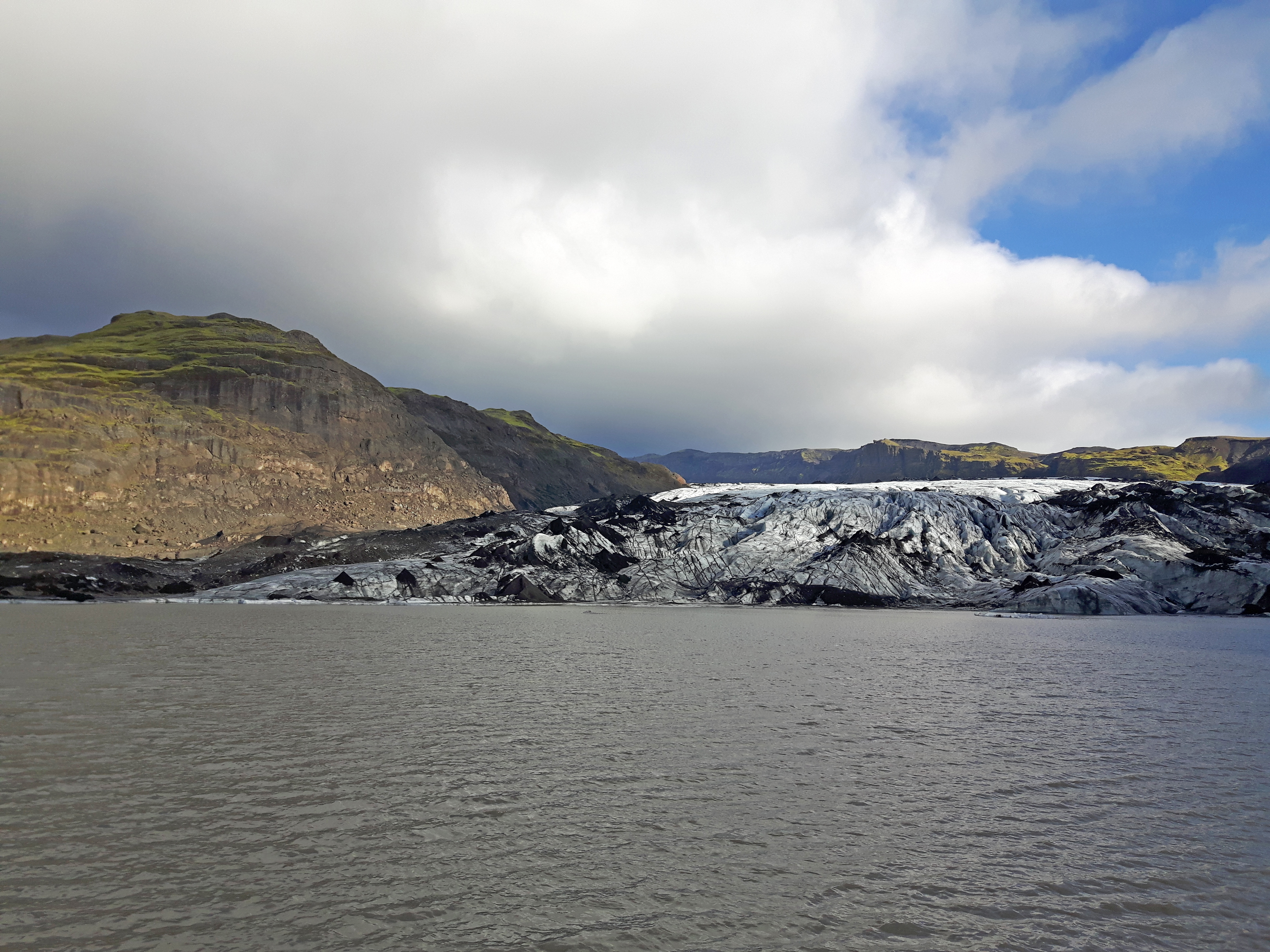
When we reached the foot of Sólheimajökull, we stopped and strapped on our crampons in order to give us grip on the icy terrain that we were about to hike up. I glanced into the distance at the large glacier standing tall in front of me and turned to look back at the lagoon and felt a sense of sorrow. Remember at the beginning of this post when I mentioned Sólheimajökull’s nickname is the “Incredibly Shrinking Glacier of Iceland?” Well, the lagoon at the bottom of Sólheimajökull has retreated a kilometre in the last decade and because the bottom of the glacier is below sea level, it will more than likely leave a massive lake as it fades away. It was absolutely mind boggling to see the distance that the glacier had faded in such a short amount of time. If anyone sees the negative side of climate change, it is surely the Icelandic people, without a doubt.
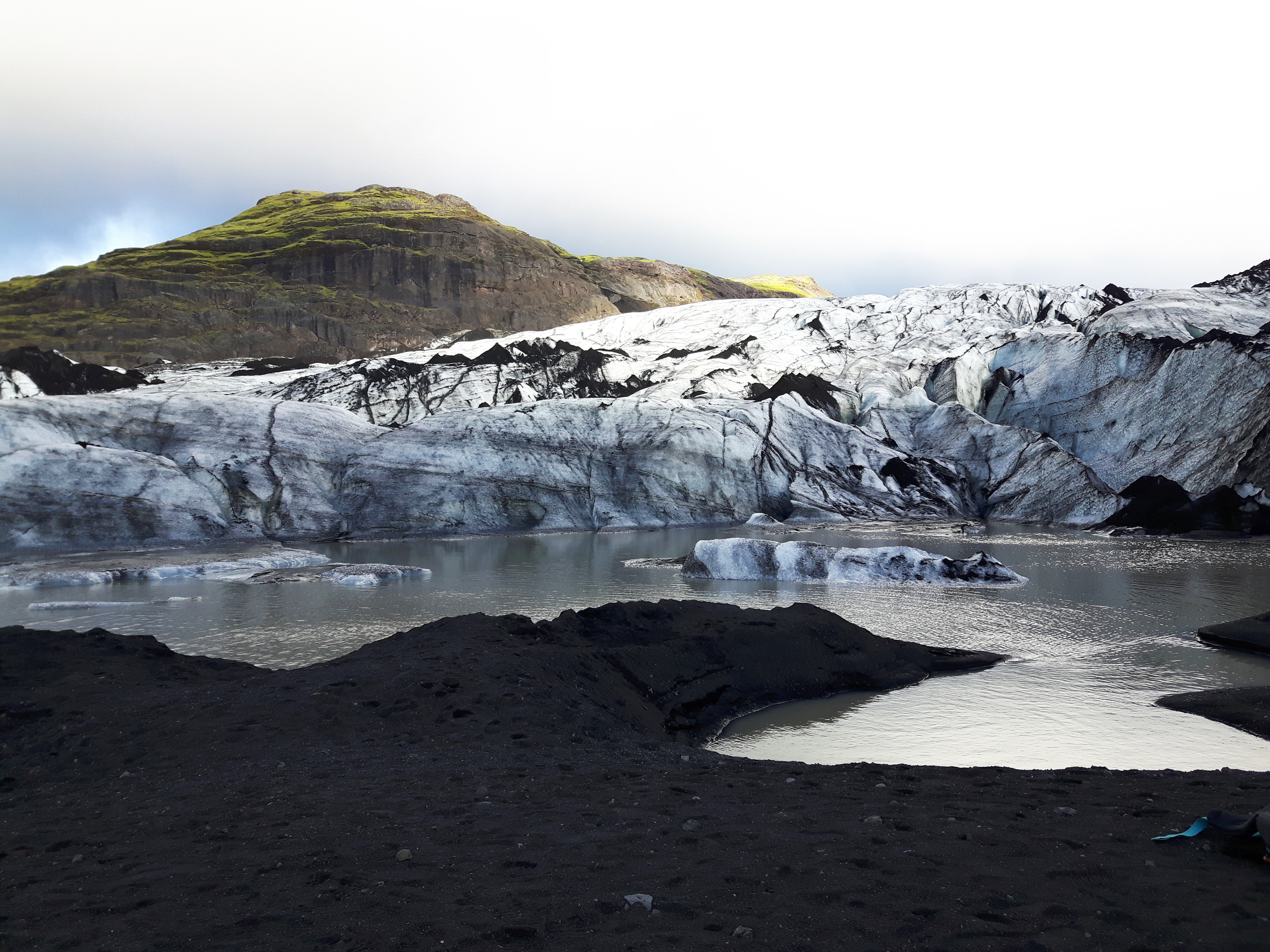
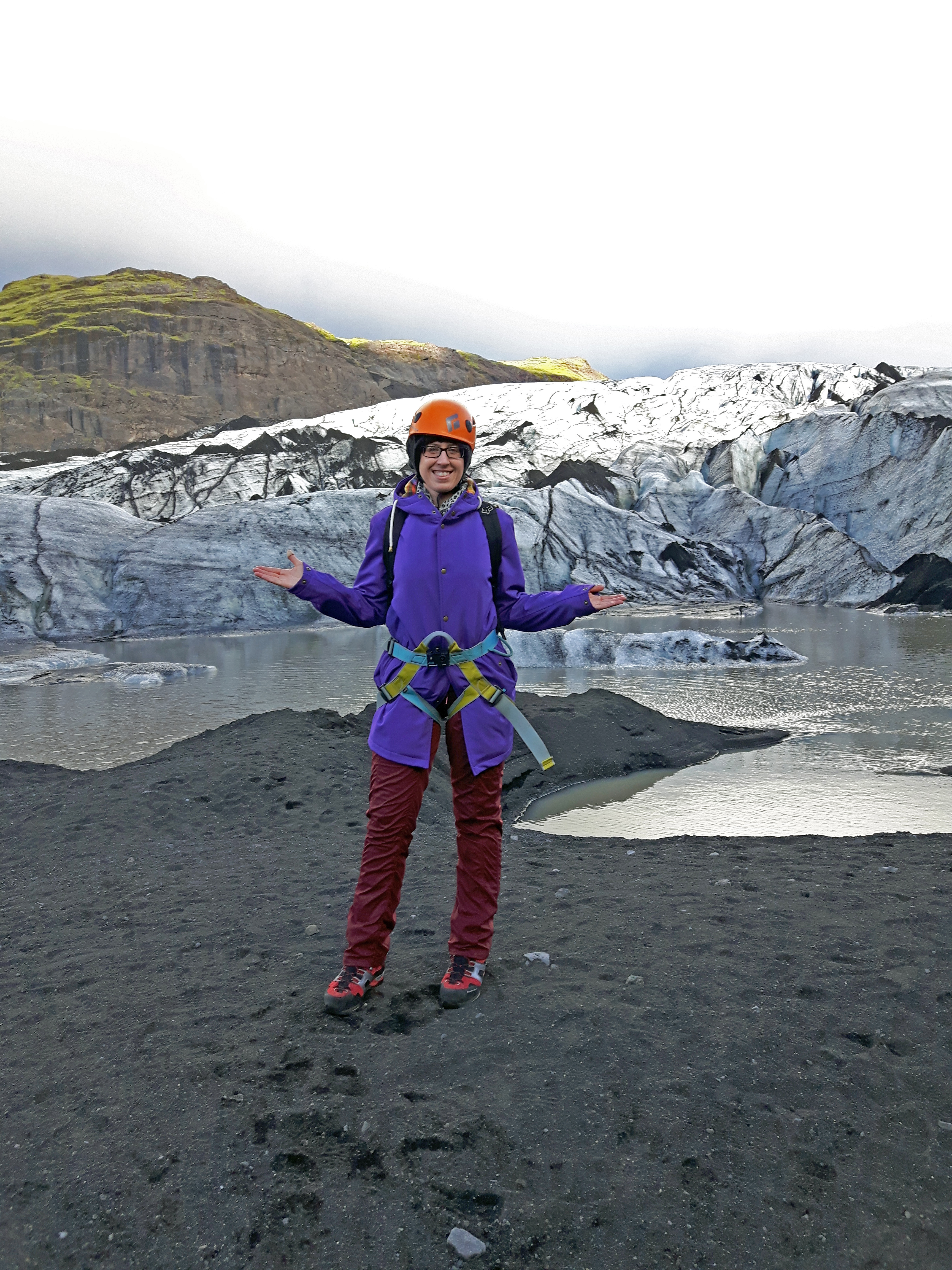
Once everyone in our group had their crampons on, Hodei then tells us to follow him in a single file line at all times, as he knows where to step to avoid falling into crevasses, or even devastating sinkholes, which seem almost hidden to the untrained eye. Walking with the crampons on wasn’t actually as hard as I thought it would be. Walking with them is more like stomping, rather than the traditional heel-toe movement because it is quite easy to trip on the frontal toe spikes if you’re not careful. Making our way up the glacier, we pass heavy black volcanic ash that has been deposited over the ice by past eruptions of Katla volcano, which the Mýrdalsjökull ice cap covers. Oh, did I forget to mention that? Well, we are walking over Katla, which is due to erupt soon and will cause an immense amount of volcanic ash and soot to fly into the air, which will cause massive floods. As I stomp my way up the glacier and listen to the sounds oh my crampons crunching the thick ice, I try not to think of Katla and the potential consequences. By the time we make our first photo stop, I am sweating from the uphill walk. The walk up Sólheimajökull is fairly easy and very accessible, but like any glacier activity in Iceland, always make sure you have an experienced guide with you and the proper gear.
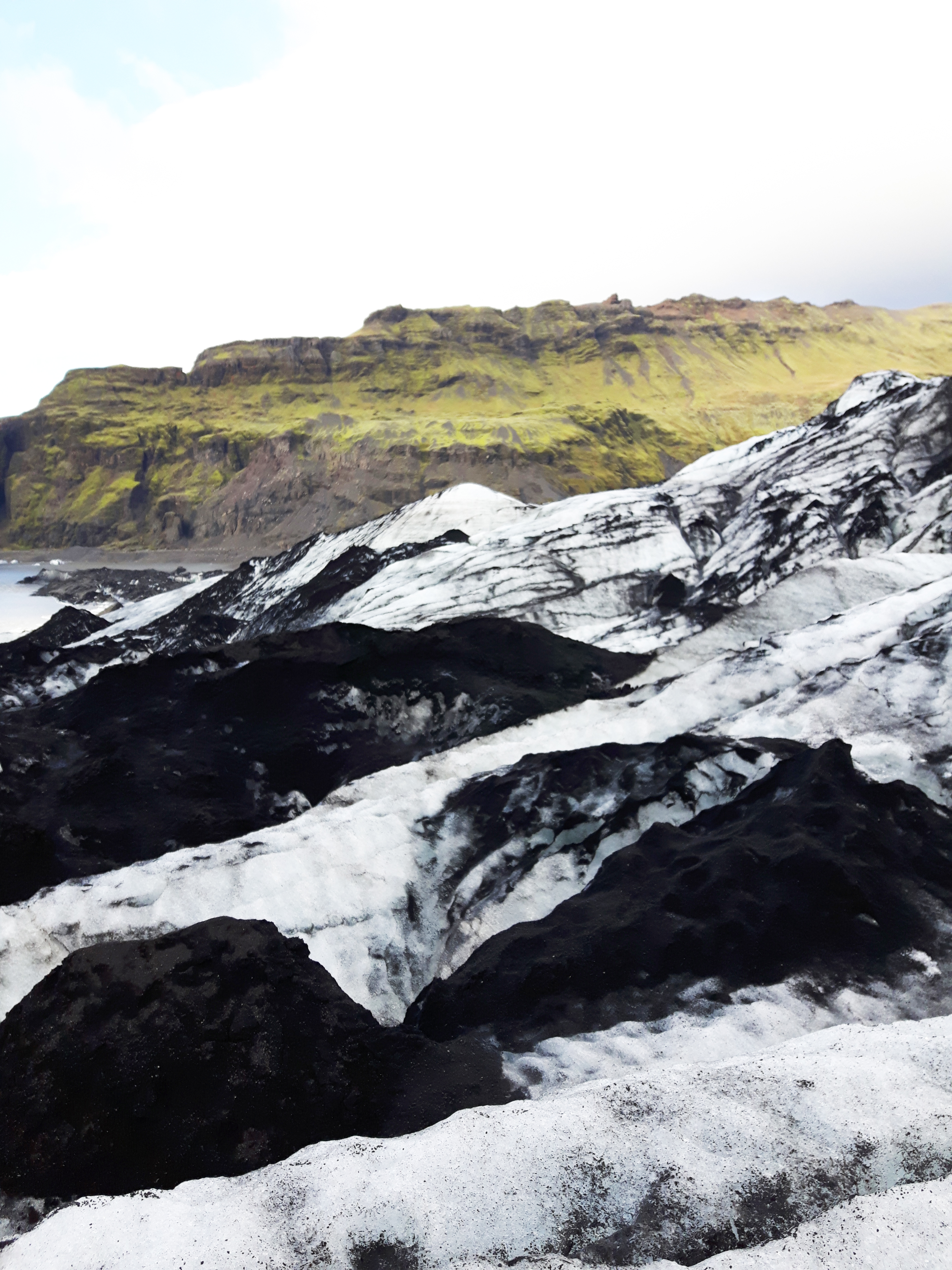
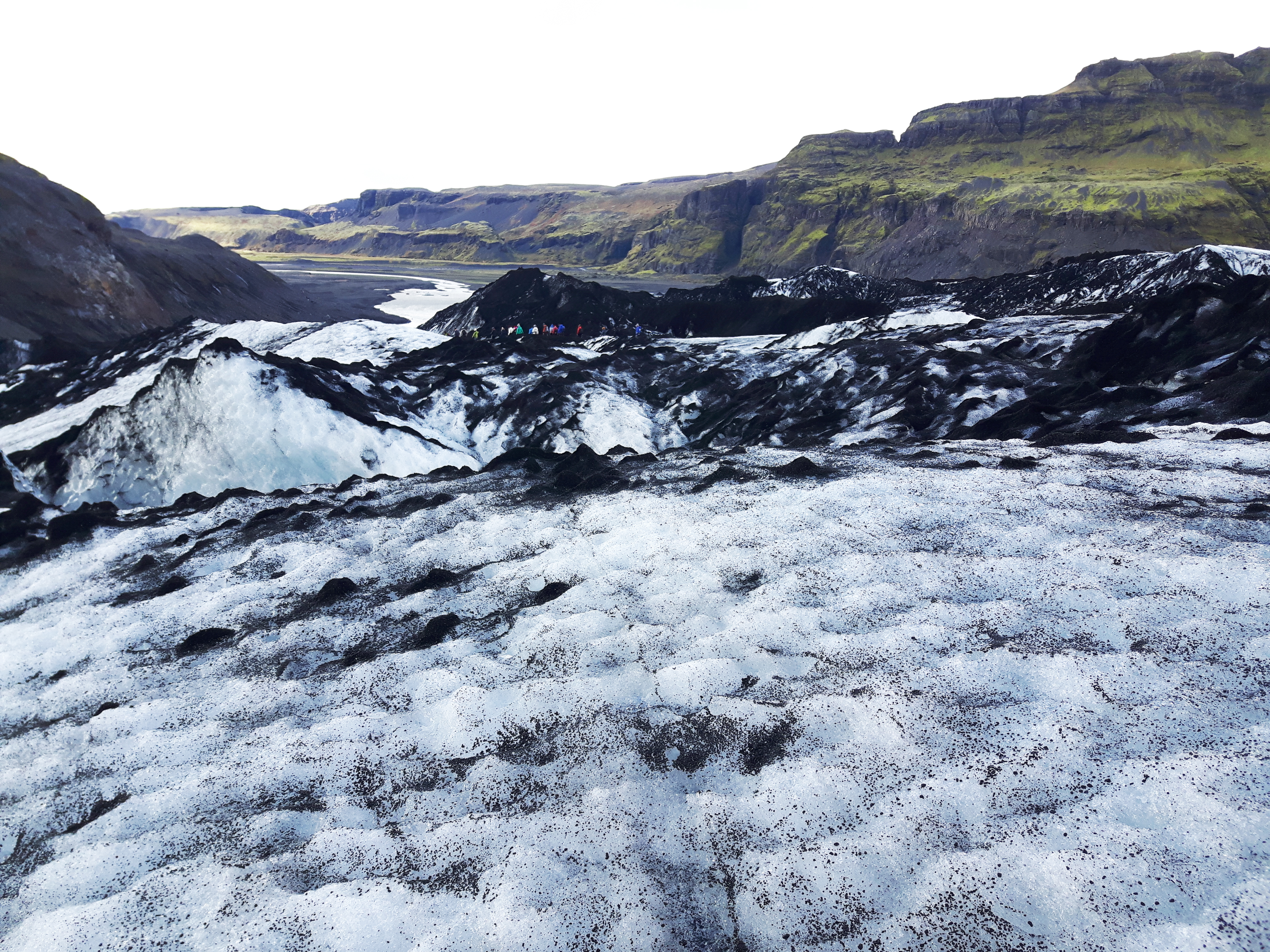
After a few photos, we continued our hike further up Sólheimajökull over glacial river streams, ice ridges and around scary looking sinkholes, which are quite intimidating to step over at first. The further we walked, the landscapes morphed into otherworldly shapes, which made it look like we were exploring an icy version of Mars. During the beginning of the hike, we could see other groups far in the distance, with their brightly coloured helmets and coats contrasting against the bright white ice. Now, a few hundred metres into the hike, we couldn’t see another soul, other than our own group members. It definitely felt like we were alone on another planet. I was really enjoying breathing in the cool, crisp fresh air and enjoying nature’s most beautiful creation surrounding me in complete solitude.
Further up the glacier, Hodei tells us to stop and step back. He shows us a massive moulin (French for well), which are rounded shafts that spiral down into the depths of the glacier. Water swirls around to create these treacherous wells and are extremely dangerous. If you fall into one, chances of survival are slim to none. A tourist was said to have fallen into one after venturing out on his own and was found dead four days later. Yet, another reason why having a trained guide is SO crucial on glaciers. Next, Hodei asks us if we are thirsty and interested in trying the freshest water we’ll ever taste. We all smile and nod our heads with excitement and curiosity. We wander over to a stream of pure glacial melt water and told we will have to “work for it” in order to sample it. Hodei then jams his ice pick horizontally into the ice over the stream and says we will have to do a push-up to take a sip. One by one, we all test our upper body strength to take a sip, and he was right, it WAS the cleanest, coldest and freshest water I’ve ever tasted. Definitely a treat to taste nature’s finest water.
After quenching our thirsts, we continued on our glacial journey when all of a sudden we came to a massive opening that resembled a canyon of some sorts. Hodei told us to wait at the top while he carved a set of ice stairs leading down into the opening. He was hammering away at the stairs like a madman with his ice pick. I was in awe of how fast and precise he was swinging that thing around. One by one, he then called us over to carefully descend down the stairs into the large opening. I was the first to go down and quite quickly I might add. Hodei then laughed and said, “Are you sure you’ve never hiked glaciers before?” After we all descended safely, we stomped our way up to what seemed to be, a hundred foot high wall of solid ice. This was the wall he had chosen for us to climb up. Oh boy! As I cranked my neck up, I could see the overhanging lip at the top, which looked slightly intimidating, but I was still game obviously! Hodei made sure all the safety precautions were in place. He bolted and screwed climbing gear to the top, geared himself up and gave us a briefing on how to traverse the ice wall effectively and safely.
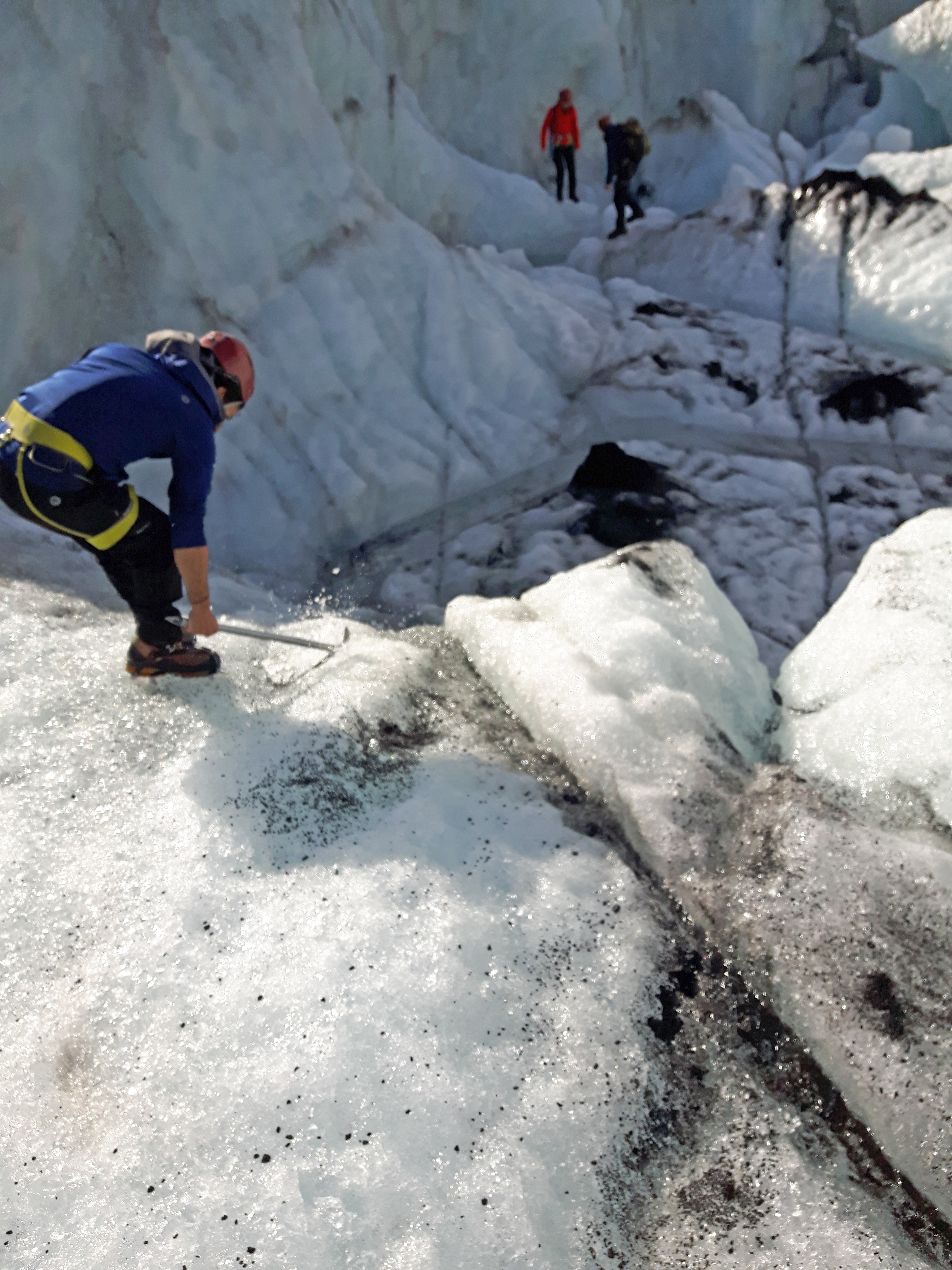
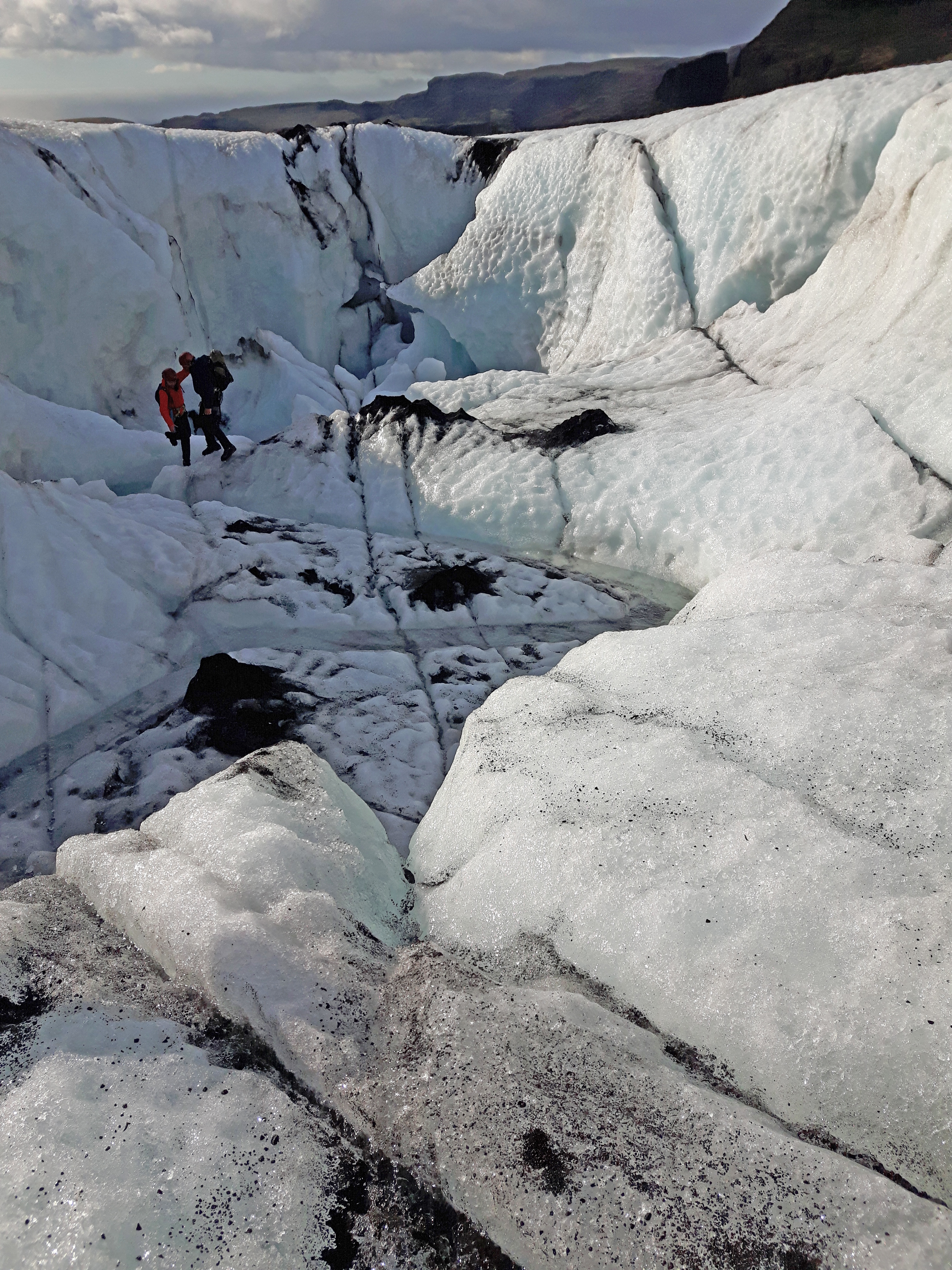
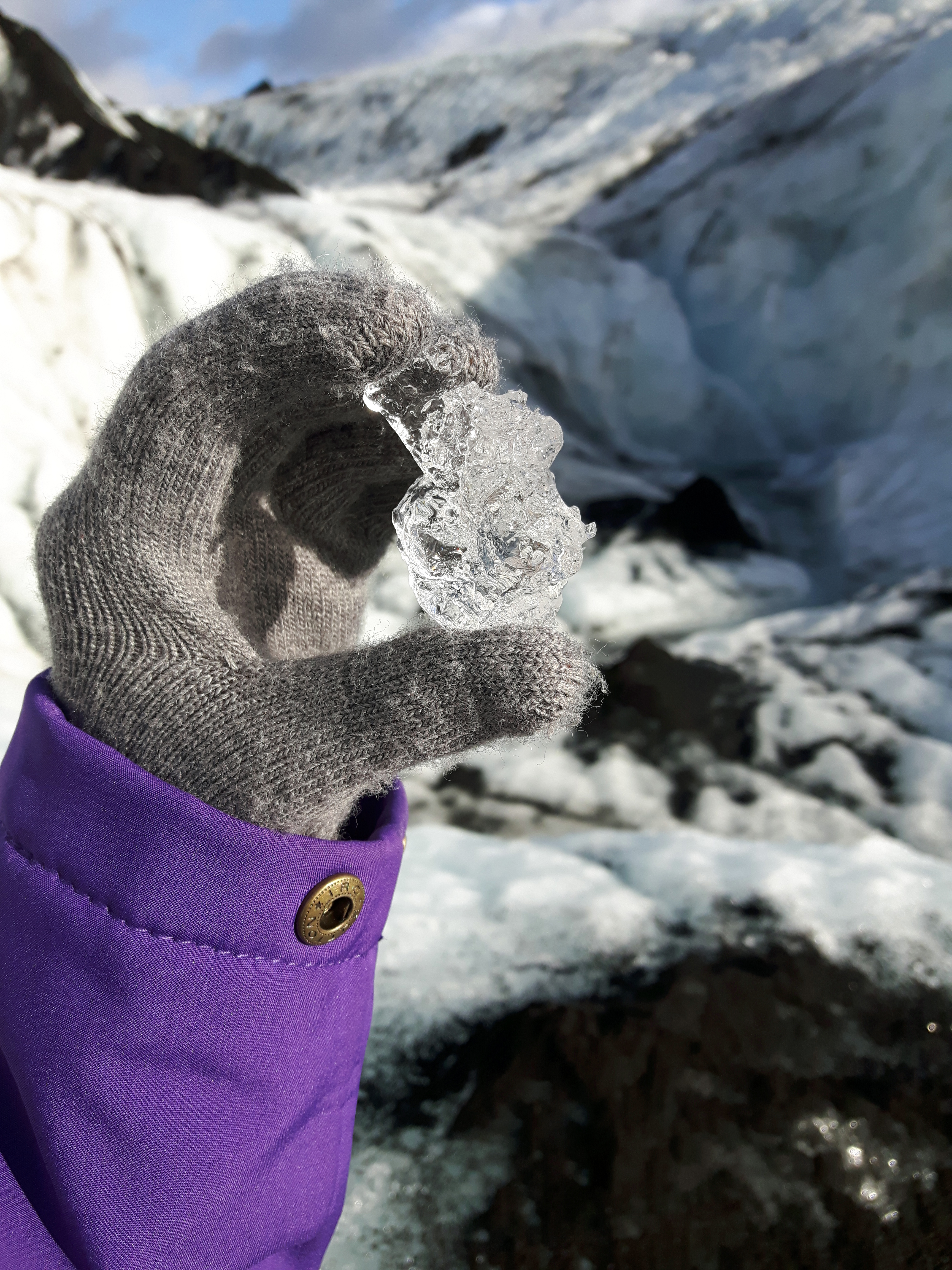
One by one, we each took our turns scaling the thick ice wall. Judging by the way some people were climbing, there seemed to be some difficulty due to the hardness of the ice. Hodei mentioned to us that the further into the year it gets, the harder it is to actually penetrate the ice. Slowly, but surely, people made there way as far up as they could. I was up next. I made my way from the viewing area down to the ice wall and strapped up. I extended my arms as high as I could and slammed my picks into the hard ice. Ice fragments came raining down on my face like little shards of glass. Kick, kick, kick. The crampons were in and I was steadily pulling myself up this imposing wall of ice. It was a lot harder than people think. My toes were aching from kicking solid ice and my shoulders were just pumped and tense. It felt like a crazy upper body workout. I was approaching the lip towards the top when all of a sudden my picks came out of the ice and I fell. Knowing that I was safely strapped in and under Hodei’s watch slipped my mind and I thought I was going to die. Not actually though, but it was still pretty unnerving having ice picks fall towards your face. With my adrenaline pumping and with my stomach in my throat, I looked down at Hodei and decided that I had enough and would like to be lowered down to solid ground. I made it far enough towards the top, so I was content with that.
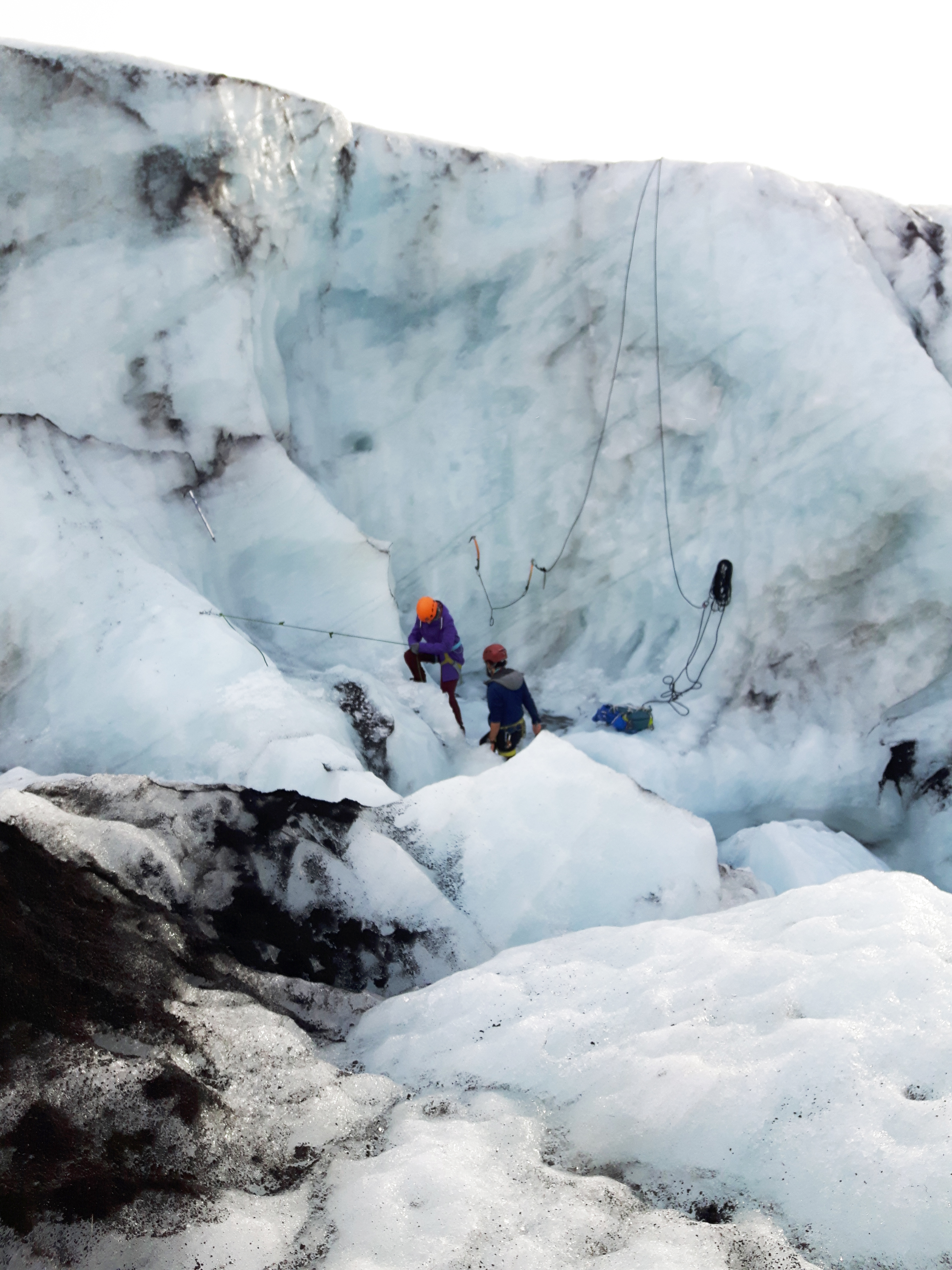
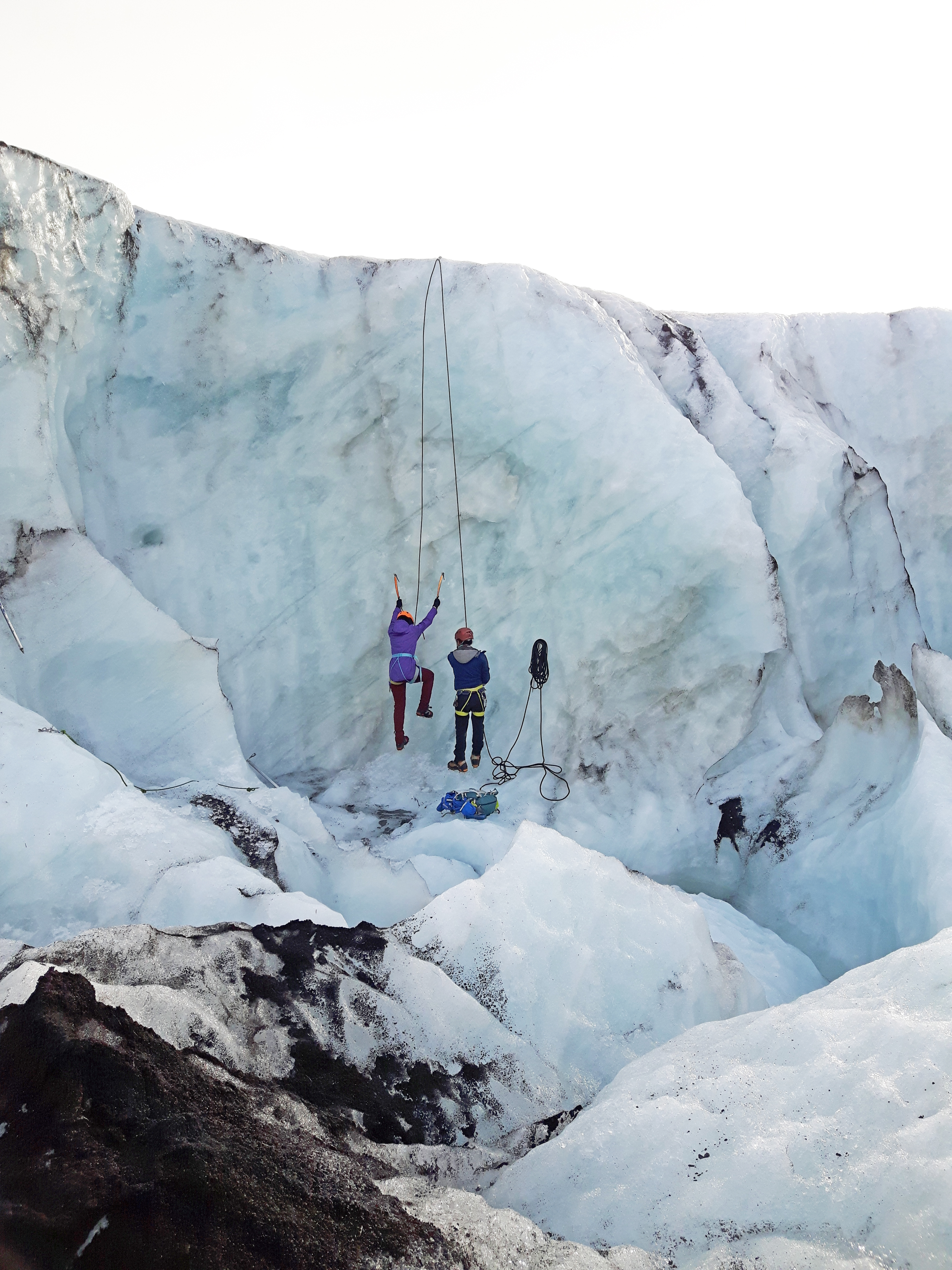
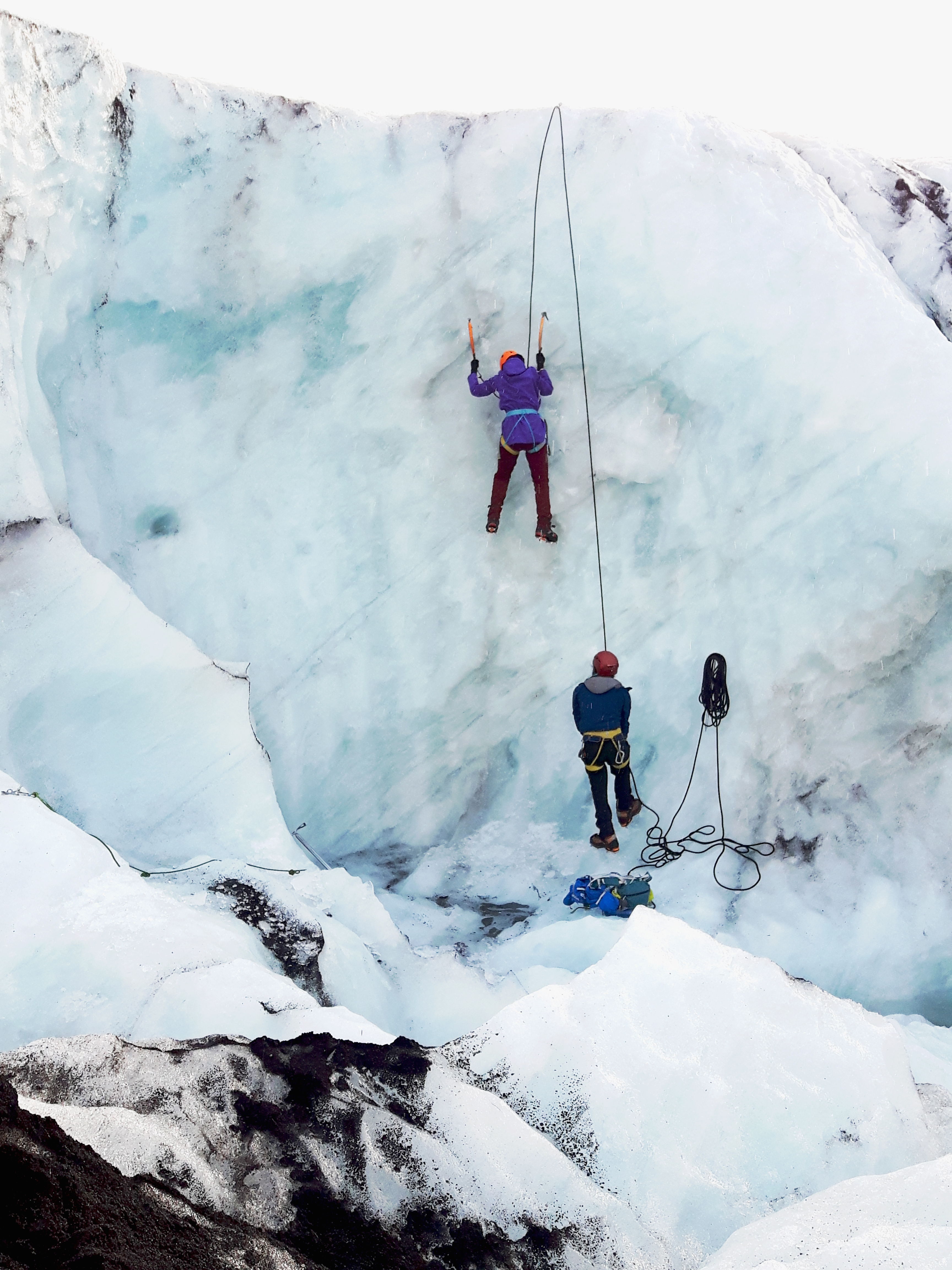
Once everyone had their turn at being glacier ice wall climbing spiders, we were told that it was quite late and we would have to really speed things up to get down to the bottom, as the weather was calling for rain and the other half of our van’s group was waiting with their guide at the gear bus already. Quickly, yet safely, we made our way down Sólheimajökull and back to the lagoon area to remove our crampons and give them a wash in the lagoon. On the way back to the parking lot, I asked Hodei what made him decide to be a glacier guide. “The glacier is constantly changing, day by day, so I really enjoy the challenge, as no two days for me are the same.” Not knowing what to expect seems to be what draws these guides to do what they love, and they love teaching others about their job and their “office” as well.
It was time for us to board the van and make the two hour drive back to Reyjkavík. After a very adrenaline filled and extremely educational day out exploring Sólheimajökull, I passed out hard on the drive home. Getting to know Iceland’s fastest shrinking glacier up close and personal was not only exciting, but also a privilege. Mother Nature not only shows us the sheer force that she has, but also how fragile she is as well.
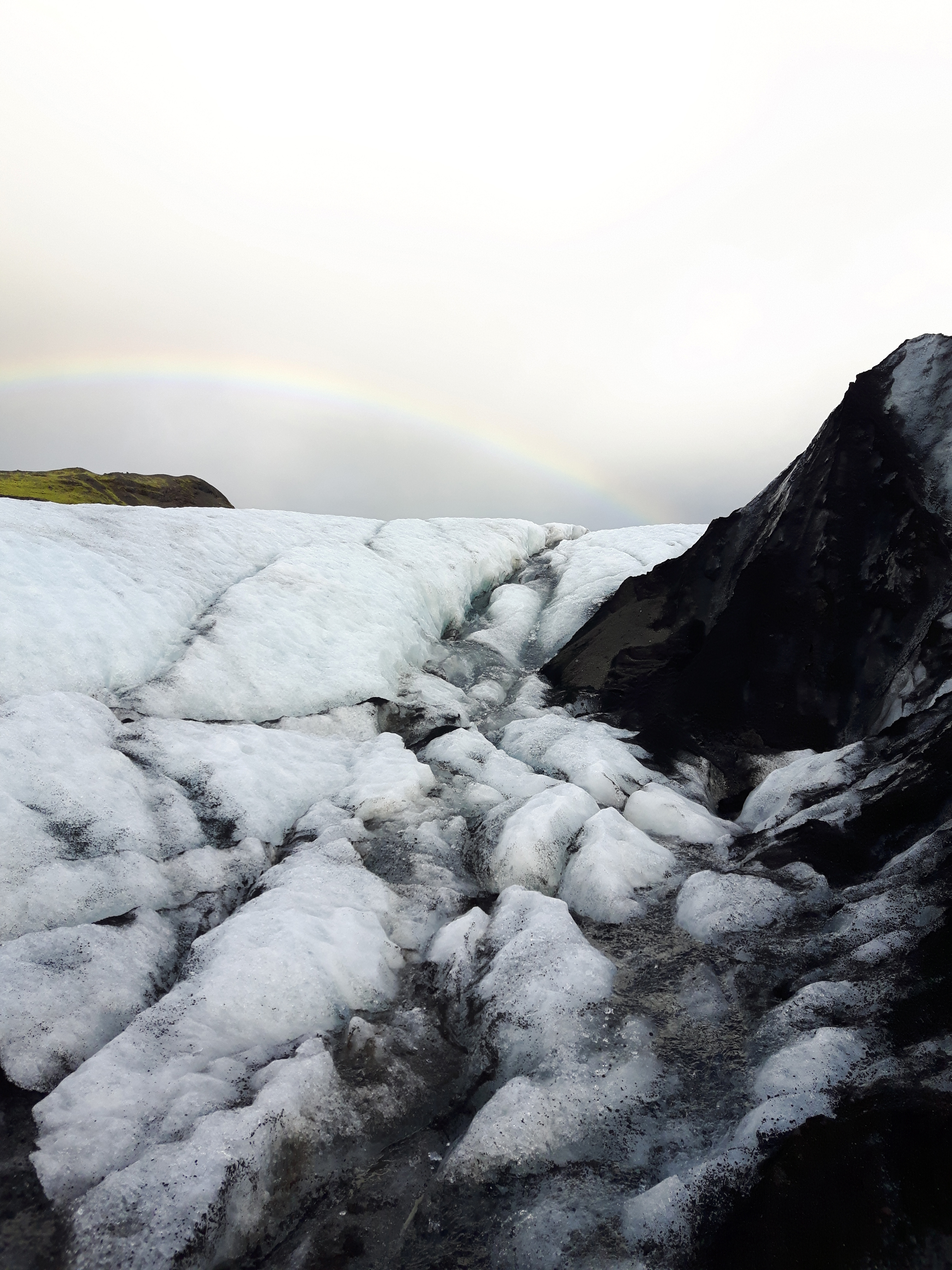
Tour Details
- Who: Arctic Adventures
- Website: https://adventures.is
- Meeting Time & Place: Your downtown Reykjavík hotel at 8am, or the parking lot at Sólheimajökull (check site for updated times)
- Cost: Check website for updated tour costs
- Operates: Daily All Year
- Included: English speaking guide, helmet, crampons, ice pick, safety harness, Pick Up & Drop Off from your downtown Reykjavík hotel, hiking shoes if needed at a small additional cost
- Not Included: Thermal under layers, lunch & snacks
- Wear: Thermal layers, waterproof pants and jacket and thick thermal socks (bring extra clothing for afterwards)
- Tour Duration: From Pick-Up to Drop-Off is about 10 hours total (You will be on the glacier for approximately 2 hours, so the rest of the time is getting gear on and transportation)
The team from Arctic Adventures are a group of passionate, friendly, extremely knowledgeable and safe people. A HUGE thank you to Hodei for being an outstanding guide and keeping me from cracking my skull open as I careened towards the ground from the ice wall!!
